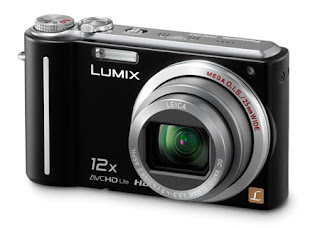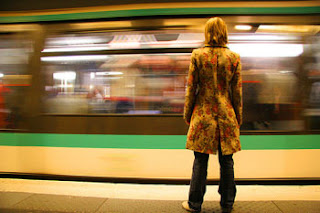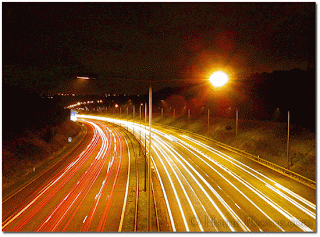10 Fantastic Photography Tips
Sunday, December 20, 2009
 10 Fantastic Photography Tips-Here are our favourite top 10 photo tips and tricks to help you become a better photographer. Forget about relying on lady luck, or wasting your precious time wading through and deleting disappointing pictures, we'll help you get it right first time. Making it easier to print your favourite photos and share the highlights of your life online. So whether you're going to be out & about photographing weddings, your kids and pets, enjoying family days out, or you latest holiday, follow our advice for fantastic photos to be proud of.
10 Fantastic Photography Tips-Here are our favourite top 10 photo tips and tricks to help you become a better photographer. Forget about relying on lady luck, or wasting your precious time wading through and deleting disappointing pictures, we'll help you get it right first time. Making it easier to print your favourite photos and share the highlights of your life online. So whether you're going to be out & about photographing weddings, your kids and pets, enjoying family days out, or you latest holiday, follow our advice for fantastic photos to be proud of.
1. Get inspired
Flick through online photo galleries, you'll find they're a great source of inspiration when it comes to taking your own images.
2. Personal photography manual
Use a Photo book or Stylebook as your own personal photography manual. Include details on how you took the shots, the settings you used, and any other handy hints. It's a great way to learn.
3. Off centre
It's tempting to just aim your camera directly at your subject and shoot. You can create a more dynamic feel though by placing your main subject slightly off centre.
4. Steady support
Tripods aren't the easiest things to carry around but they do enable you to use a slow shutter speed without getting camera shake.
5. Waste of space
Wasting space is widely regarded as one of the most common crimes committed by amateur photographers. Some pictures work with plenty of space around the main subject but most have more impact close up.
6. Show off the shape
Interesting shapes are best shown against a plain background where there is little or nothing to distract the eye.
7. Strong lighting
Strong direct light from behind the camera works well with architectural shots but is usually very unflattering for portraiture.
8. Magical monochrome
Black & white images are great for disguising clashing colours and focusing your attention on the mood of the picture instead.
9. Light ideas
Experiment with different light sources such as candlelight, firelight and tungsten to give a different feel to your photos.
10. Make a gift
Use your new stylish photos as a great personalised gift. Create home ware, books or calendars from your photos for your friends and family.
















 So many amateur photographers never consider the possibility that they can take photos like the ones they see in magazines. A good photo is taken by a good photographer and not a good camera. If you want to shoot those beautiful landscapes or stunning portraits then you will be able to if you set yourself simple goals to get there. Know what you want and it's only a matter of a few simple goals and you'll be there in no time. Those who fail to plan, plan to fail.
So many amateur photographers never consider the possibility that they can take photos like the ones they see in magazines. A good photo is taken by a good photographer and not a good camera. If you want to shoot those beautiful landscapes or stunning portraits then you will be able to if you set yourself simple goals to get there. Know what you want and it's only a matter of a few simple goals and you'll be there in no time. Those who fail to plan, plan to fail.
























 Photo Editing Software-For beginners, try to select a photo editor that begins with a trial version. Of course the trial version should convey a good introduction to the full version of the software and try to select a photo editing software that can handle with a couple of click of mouse and add good characteristic to your photos you desired.
Photo Editing Software-For beginners, try to select a photo editor that begins with a trial version. Of course the trial version should convey a good introduction to the full version of the software and try to select a photo editing software that can handle with a couple of click of mouse and add good characteristic to your photos you desired. Best Modeling Agency-Washington resident, Kendra Thompson was hoping one day to be a standout on the fashion runways. She religiously watched shows on Entertainment television where girls were competing with one another to see who would be the next big thing. When she turned twelve, her parents took her to a modeling agency just for a simple, no pressure, introductory meeting.
Best Modeling Agency-Washington resident, Kendra Thompson was hoping one day to be a standout on the fashion runways. She religiously watched shows on Entertainment television where girls were competing with one another to see who would be the next big thing. When she turned twelve, her parents took her to a modeling agency just for a simple, no pressure, introductory meeting. Camera batteries of a camera must be closely scrutinised before you buy one. There are different types of batteries for different types of cameras. If the wrong kind of battery is bought by mistake, it might not suit the camera and may result in some problems. Digital camera batteries are often of the rechargeable type.
Camera batteries of a camera must be closely scrutinised before you buy one. There are different types of batteries for different types of cameras. If the wrong kind of battery is bought by mistake, it might not suit the camera and may result in some problems. Digital camera batteries are often of the rechargeable type.